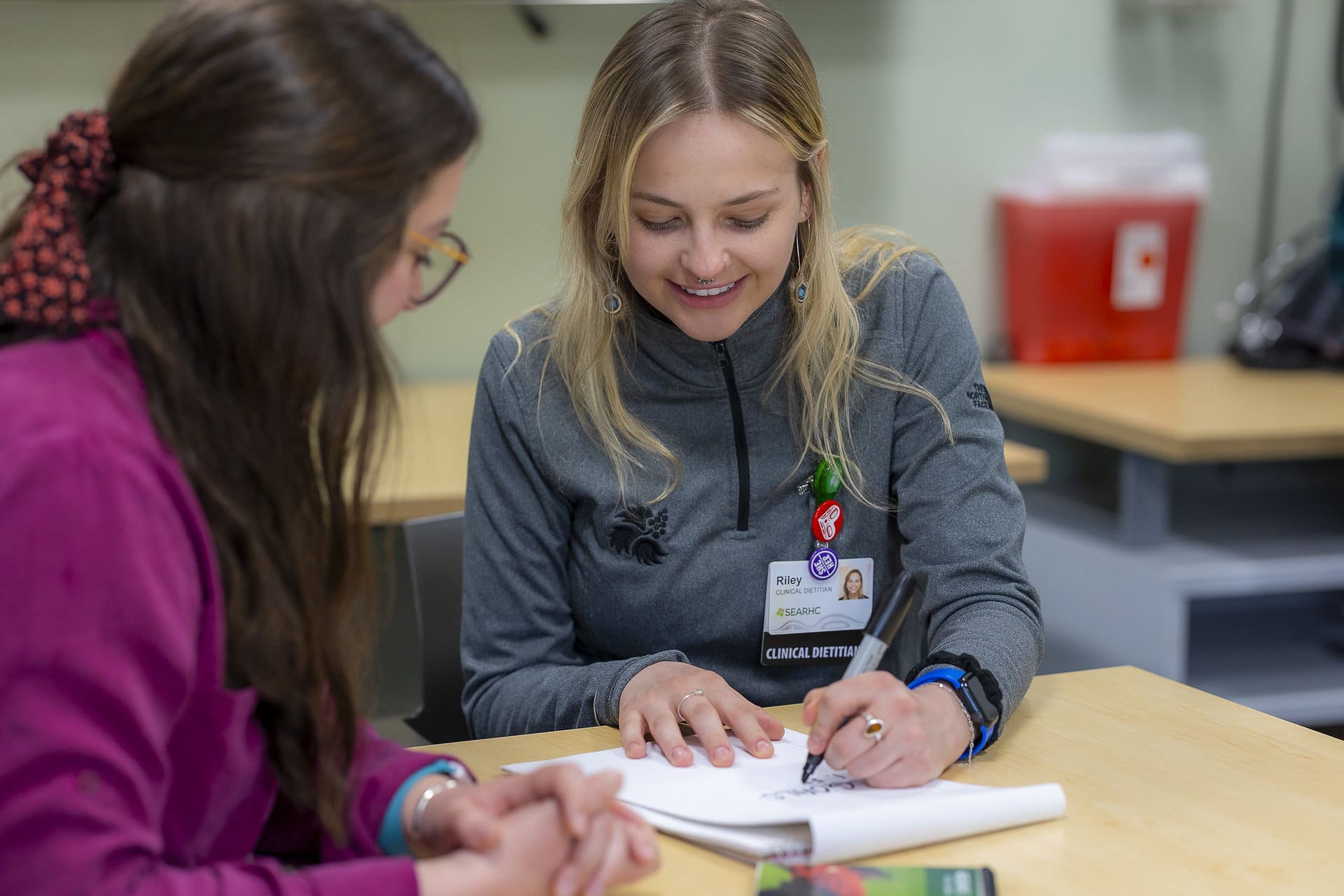What to Expect: Women’s Health Wellness Visit
As 2025 ramps up and January celebrated Cervical Cancer Awareness Month, it is as good a time as any to plan your Women’s Health Wellness Visit. It is vitally important to get yourself, and encourage others, screened. Early detection through screening can help identify cancer at an early stage when treatment is more effective.
What is a Women’s Health Wellness Visit?
Wellness visits are a yearly, reproductive health visit with a care provider. They are an opportunity to talk about healthy relationships and other parts of your emotional health. The more transparent you are with your provider, the better equipped they are to support and care for you. It is so important to build an open and honest relationship with your care provider.
What services are provided during a Women’s Health Wellness Visit?
Your wellness visit is all about you, your body and your reproductive health.
During a wellness visit, you will receive some specific prevention-related tests and exams. The type of tests and exams depend on your age, medical history and when you had your last test:
- Under 21 years of age:
- Eligible for HPV vaccination. Schedule and doses vary depending on age.
- If thinking about becoming sexually active (meaning vaginal, anal or oral sex), you may talk about birth control or sexually transmitted infection (STI) testing.
- Ages 21 to 29: A Pap and pelvic exam (more detailed information below) is a regular part of your wellness visit beginning at age 21. If test results are normal, this testing is completed every 3 years.
- Age 25: Discuss your breast cancer risk assessment with your medical provider and if you are a candidate to begin earlier screening.
- Ages 30 to 65: Pap and HPV test every 5 years, if normal results.
- Ages 40 to 50: Clinical breast exam addressing any symptoms or concerns and begin annual mammogram screening.
You might talk about your menstrual cycle, especially if you’re concerned with heavy, painful or irregular periods. A clinical breast exam by a medical provider at any age can be conducted if there are symptoms or concerns, such as lumps or nipple discharge.
If you have a vulva, breasts, or a uterus, these visits are an important part of taking care of your health; no matter what your gender identity. Always talk with your provider about what tests and exams make sense for you.
What happens during a Pap and Pelvic Exam?
When you turn 21, a Pap and pelvic exam is a regular part of your wellness visit. During the exam, a provider examines your vulva and your internal reproductive organs — your vagina, cervix, ovaries, fallopian tubes and uterus. This pelvic examination is conducted in two ways:
- The external exam — Your provider will look at your vulva and the opening of your vagina. They’re checking for signs of cysts, abnormal discharge, genital warts, irritation or other issues.
- The internal exam — Your provider will gently slide a speculum into your vagina. The speculum is made of metal or plastic. It separates the walls of your vagina when it opens. This may feel uncomfortable or unusual, but it shouldn’t hurt. If it hurts, please speak up.
- The Pap Test is performed during the speculum exam and involves a small brush used to gather cells from the cervix. The cells are put into a container and sent out for examination, this process can take 1-2 weeks as these are not performed at the clinic itself, but rather at an outside facility.
- The bimanual exam — During this part of the exam, your provider will put 1 or 2 gloved and lubricated fingers into your vagina while gently pressing on your lower abdomen with their other hand. This is a way to check for things like pain, ovarian cysts or tumors.
To reiterate, while some parts of the exam may feel uncomfortable, it shouldn’t be painful. If it hurts, let your provider know immediately. Your provider may be able to make things more comfortable. This exam is for you, so don’t hesitate to speak up.
How should you prepare for a Women’s Health Wellness Visit?
While minimal preparation is necessary on your part, here are some tips to make your visit go smoothly.
- Schedule your appointment for a day when you do not anticipate menstruating.
- Be prepared to answer the following questions:
- When was your last period?
- How often do your periods occur and how long do they last?
- Is there spotting between your periods?
- Do you experience any vaginal itching, pain or discharge?
- Are you experiencing any medical concerns?
- Prepare a written list of questions to ask your provider.
- These questions can include:
- What lifestyle changes can improve my overall health?
- Which screenings and vaccinations do I need for preventive care?
- What specific health conditions am I at an elevated risk for?
- Bring a friend or parent with you during the appointment if it makes you feel more comfortable.
- These questions can include:
Need to know when you’re due for your next Women’s Health Wellness Visit?
Call SEARHC at 907.463.0400
Did you know that the program may be able to help you cover the cost of your women’s health wellness visit? For more details and to see if you qualify, call 907.966.8525.





